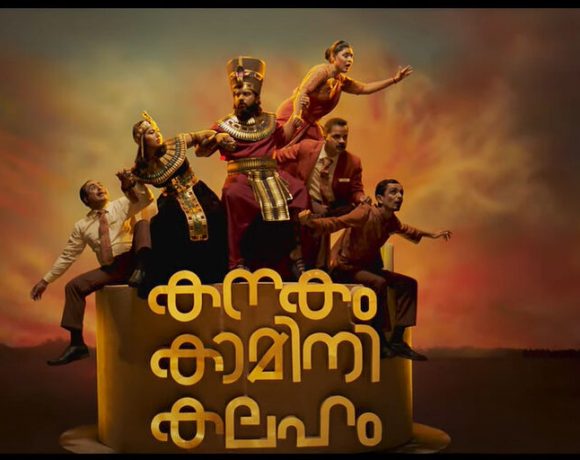The Beautiful Islands:NEW ZEALAND
 Tourism is an important industry in New Zealand, contributing NZ$15 billion of the country’s GDP in 2010. It is also New Zealand’s largest export industry, with more than 2.4 million international tourists visiting per year providing 18% of the country’s export earnings in 2010. New Zealand is marketed abroad as a “clean, green” adventure playground, with typical destinations being nature areas such as Milford Sound, Abel Tasman National Park or the Tongariro Alpine Crossing, while activities such as bungee jumping or whale watching exemplify typical tourist attractions, often marketed primarily to individual- and small-group travellers. By far the highest number of New Zealand’s tourists come from its neighbouring country Australia due to close proximity and relations.
Tourism is an important industry in New Zealand, contributing NZ$15 billion of the country’s GDP in 2010. It is also New Zealand’s largest export industry, with more than 2.4 million international tourists visiting per year providing 18% of the country’s export earnings in 2010. New Zealand is marketed abroad as a “clean, green” adventure playground, with typical destinations being nature areas such as Milford Sound, Abel Tasman National Park or the Tongariro Alpine Crossing, while activities such as bungee jumping or whale watching exemplify typical tourist attractions, often marketed primarily to individual- and small-group travellers. By far the highest number of New Zealand’s tourists come from its neighbouring country Australia due to close proximity and relations.
The vast majority of tourist arrivals to New Zealand come through Auckland Airport which handled over eleven million passengers in 2004. Many international tourists also spend time in Christchurch, Queenstown, Rotorua, and Wellington. Other high-profile destinations include the Bay of Islands, Waitomo Caves, Aoraki / Mount Cook, and Milford Sound. Many tourists travel large distances through the country during their stays, typically using coach lines or hire cars. Domestic tourism is also important, with domestic tourism expenditure of $13 billion outweighing international tourist expenditure of $9 billion in 2010. Overall, tourism supports some 180,000 full-time equivalent jobs with half directly related to tourism. Popular tourist activities in New Zealand include sightseeing, adventure tourism, tramping (hiking) and camping. To support active travel, New Zealand has created numerous walking and hiking paths some of which, like the Milford Track, have huge international recognition. There is also a walking route the length of the country, Te Araroa Trail, which is in the process of being finished as of the late 2000s, and a proposed New Zealand Cycleway.
Natural Beauty
New Zealand is a country of stunning and diverse natural beauty: jagged mountains, rolling pasture land, steep fiords, pristine trout-filled lakes, raging rivers, scenic beaches, and active volcanic zones. These islands are one of Earth’s most peculiar bioregions, inhabited by flightless birds seen nowhere else such as a nocturnal, burrowing parrot called the kakapo and kiwi. Kiwi are not only one of the national symbols – the others being the silver fern leaf and koru – but also the name New Zealanders usually call themselves.
These islands are sparsely populated, particularly away from the North Island, but easily accessible. There are sparklingly modern visitor facilities, and transport networks are reasonably developed. New Zealand often adds an adventure twist to nature: it’s the original home of jet-boating through shallow gorges, and bungy jumping off anything high enough to give a thrill.
Māori culture continues to play an important part in everyday life and government and corporate symbolism with abundant opportunities for visitors to understand and experience both the history and present day forms of Māori life.
Cities
Auckland is the largest metropolitan area in New Zealand, with a population of over one million. It is in the northern half of the North Island, on a narrow isthmus of land that joins the Northland peninsula to the rest of the North Island. In November 2010, four formerly separate cities were amalgamated. These four were Manukau in the south, Waitakere in the west, North Shore in the north and Auckland City itself, on and around the isthmus. These other cities, rural areas, small towns and the islands of the Hauraki Gulf can be found in the Auckland Region article.
Hamilton is an inland city in the Waikato region of New Zealand’s North Island. The Waikato River, New Zealand’s longest river, flows through the middle of the city. This effectively cuts the city in half, with Hamilton West containing the Central Business District and main shopping areas. Hamilton East, among other things, is home to The University of Waikato, resulting in a large student population.
Rotorua is known as the thermal wonderland of New Zealand. It’s hot springs and geysers have attracted tourists for over a hundred years. Rotorua sits on the shores of Lake Rotorua of New Zealand. There are several other lakes nearby. Along with the geothermal wonders, there are also the more usual water activities such as fishing, boating and white water rafting. Tourism is a major industry in Rotorua, and for good reason, the tourism services are therefore well developed and visitors should definitely make a stop at the Tourist Information Centre on the main road, Fenton Street. Rotorua is built over a geothermal hot spot. There are numerous natural vents, hot pools and other geothermal features in and around the city. Many of these are in parks and reserves. Natural eruptions of steam, hot water and mud occasionally occur in new locations. Many places have their own private geothermal bores for heating and water for bathing although private use of naturally occurring geothermal water and steam is controlled. It has recently been refurbished. Wai-O-Tapu is also an entertaining day out.
Napier is a city in Hawke’s Bay, on the east coast of the North Island of New Zealand. The city is famed for its Art Deco architecture. The 1931 Napier earthquake and a subsequent fire destroyed much of the downtown business area. When this area was rebuilt, it was reconstructed in the prevailing Art Deco style. Now it is the Art Deco capital of the world. The demolition rubble was dumped along the eastern foreshore and turned into gardens and a recreational reserve. The nearby township of Taradale has the regions oldest and most famous wineries that host concerts during the summer seasons.
Wellington is the capital of New Zealand but only its third largest city. The Windy City is on the foreshore of Wellington Harbour and ringed by mountains, providing the scenic home of many of New Zealand’s national arts and cultural attractions. Wellington offers a blend of culture, heritage, fine food, and lively arts and entertainment. Surrounded by hills and a rugged coastline, the city boasts a stunning harbour. Wellington’s charm is that it serves up a vibrant inner city experience with a slice of New Zealand scenery. And because of its compact nature, you can sample it all: boutiques, art galleries, trendy cafes and restaurants. Right on its doorstep is a network of walking and biking trails with beautiful wineries and vineyards just a few hours away.
Nelson is the second oldest settled city in New Zealand and the oldest in the South Island. Nelson is situated in a region often known as Nelson Tasman or the “Top of the South.” It is actually slightly north of the capital city of Wellington. Together with Richmond, it has a population of around 50,000 ranking it as New Zealand’s 10th most populous city and the geographical centre of the nation. Nelson is a compact coastal city set amongst some of New Zealand’s most stunning scenery. The city is the economic and cultural centre for the Nelson-Tasman region and offers an excellent range of shopping, eating and cultural experiences with an abundance of parks, rivers, beaches and nature trails to explore. It is the place that most kiwis would like to retire to – if they could afford to, since Nelson has some of the most unaffordable housing and lowest “sunshine” wages in New Zealand.
Christchurch is the largest city in the South Island of New Zealand with a 2006 population of over 350,000, making it the second largest city in the country after Auckland. It is on the edge of the Canterbury plains and is a major stepping off point for touring the South Island. Christchurch was established in 1850 by English settlers. Its English heritage shows in the older buildings, especially in the cultural precinct along Worcester Boulevard. The River Avon flows through the central city and disrupts the regular rectangular layout of the city streets.
Christchurch is known as the Garden City, a well-deserved name. Looking from a few floors up, one is struck by the number of trees that grow like a forest throughout the suburbs.
International tourism, especially foreign-student education for the Asian market, was a growing sector of the Christchurch economy, as is electronics and software development. Because of this there is a high concentration of cyber-cafes here.
Queenstown is a scenic town in the South Island of New Zealand. It is one of the most beautiful regions and offers year round attractions. The town sits on the edge of Lake Wakatipu and is surrounded by the Southern Alps. The most remarkable sight is the Remarkables, which is a saw-toothed range of mountains on the opposite side of the lake from the town.
Abel Tasman National Park is in the Nelson Tasman region of the South Island of New Zealand, between Golden Bay and Tasman Bay. Located in the Nelson and Marlborough Regions on the northern tip of New Zealand’s South Island; The park is closed to vehicles, and access is either on foot (from one of the various car parks mentioned below) or by boat, or if you’ve got money to spend it is possible to charter a helicopter or small plane. Some of the land in the park is privately owned – mainly in Awaroa Bay and Torrent Bay. It is important to remember this when visiting the park – the locals are friendly but they don’t want loads of travellers walking through their backyards all the time! However these areas are clearly marked so you shouldn’t have any problems.
The Coromandel Peninsula is on the north-eastern coast of the North Island of New Zealand. Fabulous golden and white sand beaches with magnificent coastal scenery, a rugged forest cloaked interior waiting to be explored, are just some of the natural attractions that have people returning to The Coromandel time after time.
The Peninsula separates the Hauraki Gulf and coasts around Auckland from the Bay of Plenty. The Peninsula is a popular holiday destination and can get very busy during the summer months.
Cathedral Cove
Local towns include Thames, Coromandel and Whitianga and Whangamata. Smaller settlements include Te Puru, Waiomu, Tapu, Colville, Whangapoua, Matarangi, Kuaotunu, Coroglen, Cooks Beach, Hahei, Hot Water Beach, Tairua and Pauanui.
Tongariro National Park is New Zealand’s first national park and a World Heritage site. The park contains 3 active volcanoes as well as 2 major ski fields.
In 1993 Tongariro National Park became the first property to be inscribed on the World Heritage List under the revised criteria describing cultural landscapes. The mountains at the heart of the park have cultural and religious significance for the Maori people and symbolize the spiritual links between this community and its environment. The park has active and extinct volcanoes, a diverse range of ecosystems and some spectacular landscapes.








